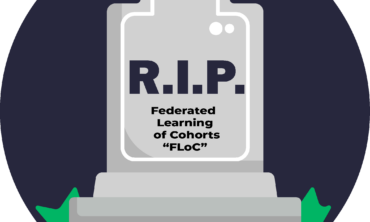3 Overlooked Steps to Effective Personalization
In an increasingly competitive market, marketing success depends on advancing the customer experience and personalizing the customer journey across channels. In fact, 57% of organizations surveyed said that elevating the customer experience was top priority in 2018, according to a recent Customer Experience eMarketer report. Loni Stark, senior director of strategy and product marketing at Adobe, said in a recent Skift interview that she sees a market-wide drive towards increased personalization: “Many brands are setting the bar higher by engaging with customers on a personal level with content and messaging that is personalized, relevant, and more likely to garner engagement.”
Personalized messaging inherently relies more on technology — and more technology means that there are more ways for things to go wrong. Some tend to romanticize the idea of personalization, but, like most things, there are a lot of unsexy processes in place to make these experiences, well, personalized.
We also have different interpretations of what “personalization” even means. For the hotel industry, it may mean something like the high-touch Marriott experience — cell phone enabled room keys or curated local recommendations — while for retailers it may mean more accurate product recommendations. But despite the value these experience bring to their customers, many marketers still have a narrow view of the capabilities of personalization. The Lacek Group, a loyalty and customer engagement agency, takes a broader view of what personalization can mean, and how richer profiles of customers can be activated across channels to drive long-term emotional engagement.
Many companies are facing the challenge of how to best enable disparate data sources across paid and owned channels by leveraging multiple MarTech and AdTech solutions to deliver a consistent and relevant message in the most efficient way possible. When marketers attempt to leverage their data to create this type of experience, they often overlook three key elements of personalization. For anyone involved in personalization efforts at their company, it’s worth noting these common errors to steer clear of them when charting a path toward a more personalized customer experience.
1. Start with the need, not the content.
When personalizing a web or app experience, the budget for vendors, technology, and product development often overshadows the investment in message strategy and measurement. While the former elements are important, it’s message strategy and measurement that matter most in a competitive environment. Unfortunately, organizations often aren’t ready to slow down and they, therefore, continue with a product focus rather than a customer focus.
The Venn diagram below illustrates an example of this dichotomy — on the left are all the messages that the marketing, product, and brand teams are putting in front of their customers, while the right circle contains the content consumers really want. Ineffective messaging — no matter how targeted the delivery system — creates expensive, unnecessary friction.

To prove value, companies want to measure the efficiency and effectiveness of the content they produce. So, rather than spend money on creating content and even more money getting people to see it, work backwards by first understanding what they want to see, then creating the content. Your marketing will be more effective and efficient because of it.
When personalizing your customer experience, first dig deep into your customer data before mapping out the campaign experience or creating content. Begin by identifying two or three customer audiences that are critical to your business, but that appears to be underperforming. For example, a travel company may have a lot of low-frequency travelers who are also competitive shoppers. Once you’ve found the biggest opportunity, find micro-segments within larger, key business segments that have potential and align with your overarching business objectives. No matter which audience you identify as the opportunity, your first task is to understand who you’re going to target and why.
2. Measure long-term value.
Once you’ve identified your target audience, get the shovel back out. You now want to understand what specific behavioral indicators are going to drive long-term brand and emotional engagement, as well as which drive retention and LTV. This could be a registration, a membership, or something subtler, like a site visit or app download — or some combination of these behaviors. Across the customer lifecycle, these behaviors will change as engagement increases. When you’ve identified the clusters of behaviors that best predict engagement, you can use them to inform your measurement strategy for your newly developed target audiences.
Now that you’ve identified the behaviors that you want to elicit, you can start thinking through program design. Focusing on specific KPIs in program development is critical when designing a consistent, meaningful measurement plan. This also affords you the time to lay the foundation for measurement across channels and technology.
As obvious as having a solid measurement strategy in place may seem, it’s still an afterthought to most brands and agencies. Either the conversation happens too late in the process (after the campaign build), or the agency/company is only interested in metrics that affect certain channels, such as click-through rates and last-touch conversions. Taking the time to understand micro and macro KPIs for each audience can greatly improve your messaging strategy and again, make your marketing efforts much more efficient.
3. Build testing in from the start.
Once you’ve identified your target audience and behaviors to inform KPIs, your customers are bound to receive an offer or message that’s relevant. However, is a targeted message more effective than a non-targeted message? If performance tanks, is it because of the message or the audience? How would you know?
Most experimental testing programs are still in their infancy, and often they’re also inadequately staffed and funded. Once personalization and targeting are added to the existing tasks of simple A/B testing, it’s understandable that many program managers will struggle to integrate testing with ongoing personalization work streams. In particular, testing targeted content and personalization gets overlooked for reasons of time, complexity and expense. Most companies who progress this far believe strongly that a targeted message performs better than a non-targeted message, and proceed to execute based on this untested hypothesis. But what if your audience or message is negatively impacting performance? Planning a controlled test when developing your measurement plan helps ensure your new strategy is actually effective. When testing, you’ll need to consider content, integrations, audience size and overlap to name just a few of the variables. If your personalization work stream is different than your standard A/B testing work stream, make certain that the tests don’t overlap or interfere with the testing of other activities.
If you’re part of the 89% of digital strategists prioritizing personalization, The Lacek Group can help with audience activation and measurement. They can put your data to work to create richer, more personalized profiles of customers that can be used to deepen emotional engagement, nurture relationships and drive long-term loyalty.
ABOUT THE AUTHOR
Brian Poe is the Director of Data Intelligence & Analytics at The Lacek Group, a loyalty and customer engagement insights agency. In his current role, Brian oversees the activation of customer data, marketing technology, experimental testing and personalization at The Lacek Group. He’s also the host of a technology and marketing podcast, The Digital Measure Show: a podcast for marketing leaders and practitioners. Prior to his time at The Lacek Group, Brian served as Manager of Digital Analytics, Testing & Optimization at Best Buy.



